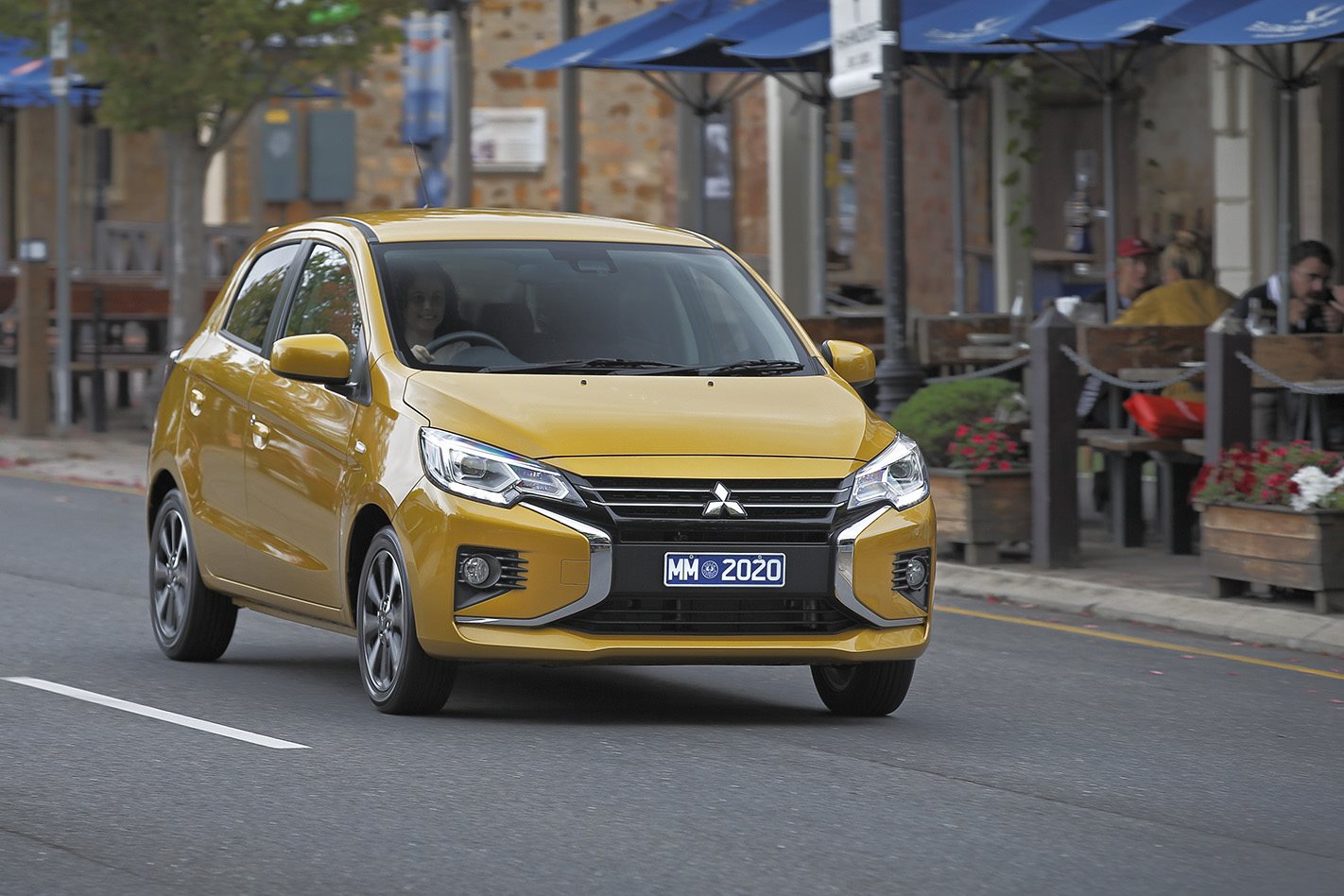
Score breakdown
Things we like
- Budget price, easy to park
Not so much
- Engine noise
- Tyre roar
What stands out?
Mitsubishi’s last remaining passenger car in Australia is all about getting your motoring dollar further while being easy to drive and park. The Mirage is bigger inside than it looks, performance is plenty for driving around town, and the tiny engine does not need much fuel.
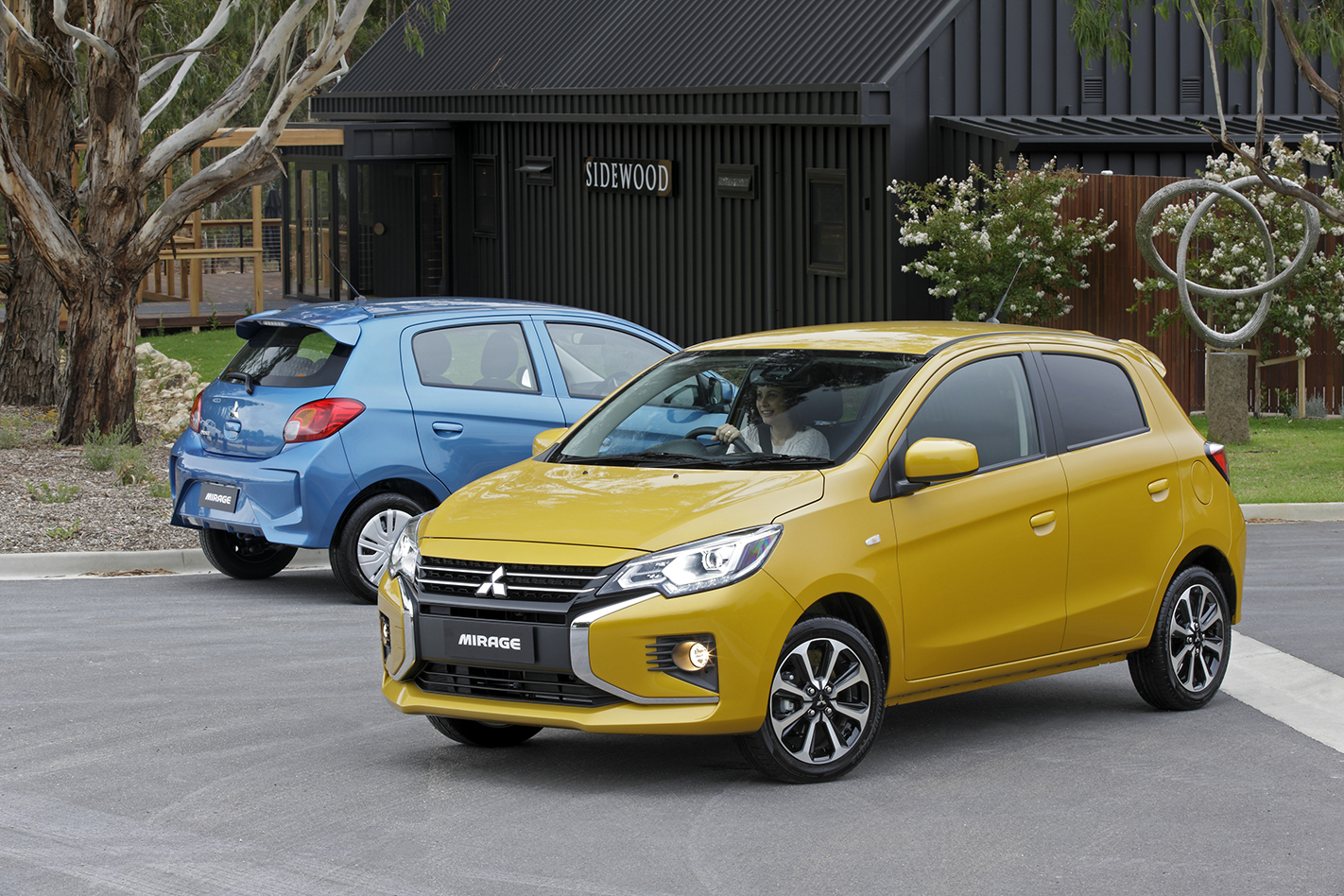
What might bug me?
How noisy the engine is, and at highway speeds how much tyre roar intrudes into the cabin.
In the manual model, the big gap between first gear and second. A low first gear makes it easy to get going from rest, but in slow traffic you wish you could hold it for longer.
What body styles are there?
Five-door hatchback only.(The Mirage was also sold in sedan form, and the sedan was a significantly bigger car than the hatchback. Mitsubishi ceased to sell the sedan about December 2016.)The Mirage drives its front wheels, and is classed as a micro car.

What features does every Mirage have?
- 7.0-inch touchscreen with reversing camera display.
- Android Auto/Apple CarPlay and Blutooth connectivity.
- Autonomous emergency braking.
- Air-conditioning, central locking, power windows front and rear (with auto up and down on the driver’s window), and power-adjustable mirrors.
- Hill-start assist helps you take off from rest on an uphill slope, by controlling the brakes automatically.
- Daytime running lamps.
- A Mirage has six air-bags, and electronic stability control – which can help you avoid a skid. For the placement of airbags, please open the Safety section below.
- All Mirages have a space-saver spare tyre.
- The Mirage carries a five-year/100,000km warranty.
Which engine uses least fuel, and why wouldn’t I choose it?
Mitsubishi has made this an easy one to answer: there’s only one engine fitted to the Mirage hatch and sedan.It’s a small – 1.2 litre – three-cylinder engine which keeps costs and fuel consumption to a minimum. The official fuel consumption figure is 4.6 litres/100km, which makes the engine a sipper in anybody’s language.You can expect to use significantly more than that in the real world, however, and especially in conditions that demand a lot from the engine – such as high speeds and hills.The least costly Mirage, the ES, comes standard with a five-speed manual transmission. A CVT transmission – which feels much like any automatic – is available at extra cost. On the more expensive Mirage LS, the CVT transmission is standard.
What key features do I get if I spend more?
The least costly Mirage is the ES, which has cloth-covered seats (like all Mirages), manually controlled air-conditioning, and 14-inch steel wheels with plastic trim. Body-coloured front and rear bumpers help it avoid looking like a pizza delivery van. You can spend more for a Mirage ES with auto transmission.
Spending more again will get you a Mirage LS, which has auto transmission standard. The LS also brings you:
- Cruise control.
- 15-inch alloy wheels.
- Climate control air-conditioning – which maintains a set temperature.
- Contrasting cloth trim.
- Lane-departure warning.
- LED headlights with automatic high beam, LED daytime running lights, LED tail-lights, and fog-lamps.
- Roof spoiler.
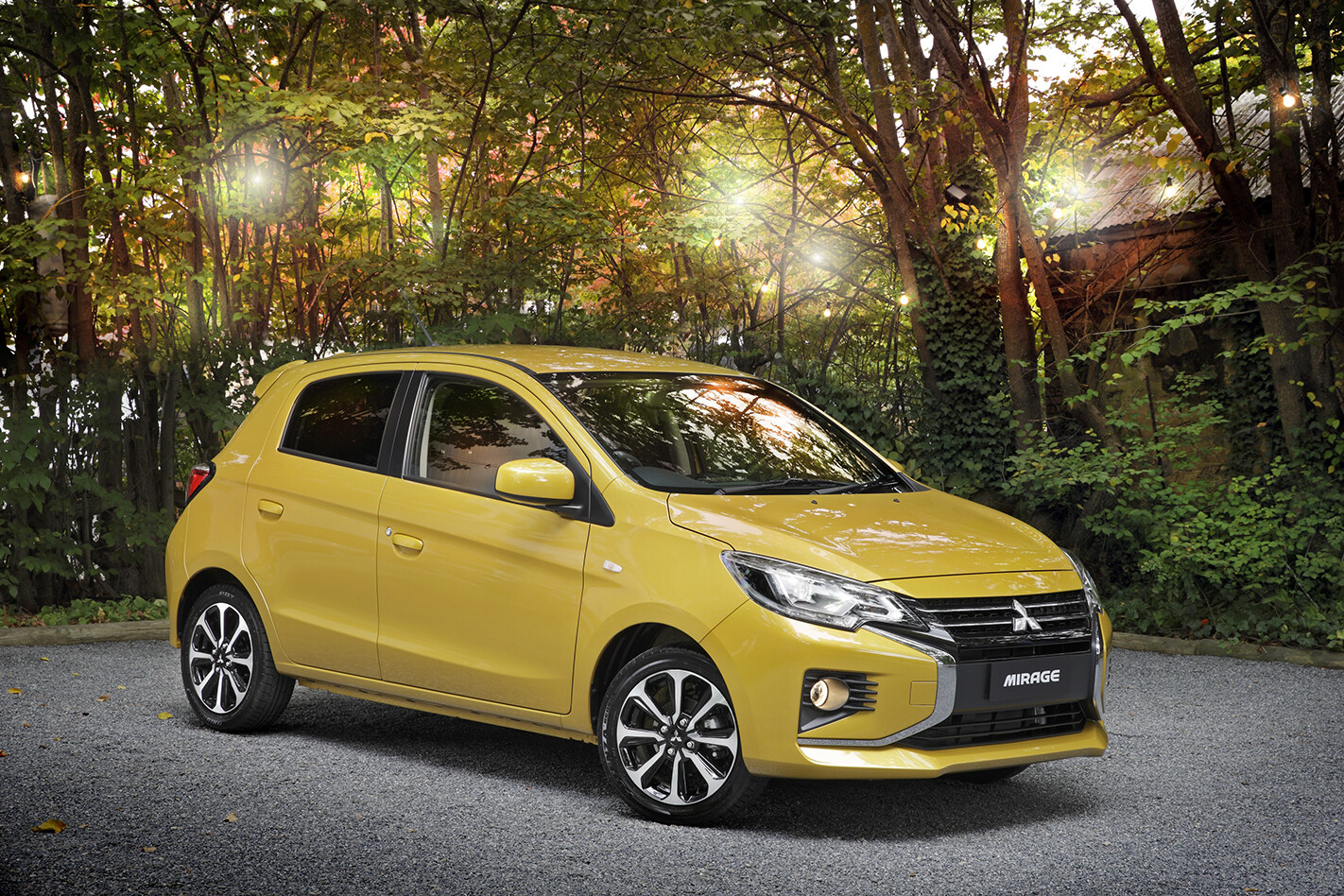
Does any upgrade have a down side?
Not really. Opting for the top-shelf Mirage LS means you miss out on the chance to team the little engine with the five-speed manual gearbox and make the most of the limited urge it provides at highway speeds. But for suburban driving, the CVT makes much easier work of things.White is the only standard colour. Settling on any other colour will cost you several hundred dollars.
How comfortable is the Mitsubishi Mirage?
Let’s just say you won’t be nodding off to sleep on the run to work in a Mirage. It’s pretty noisy, despite changes over the model life that diminished the levels of noise and vibration through the cabin.The engine has a real throb to it at idle and when it’s working hardest. It is tuneful – and you might even find its note engaging, concluding that it endows your baby car with some character. But you never forget it is working away under the bonnet.
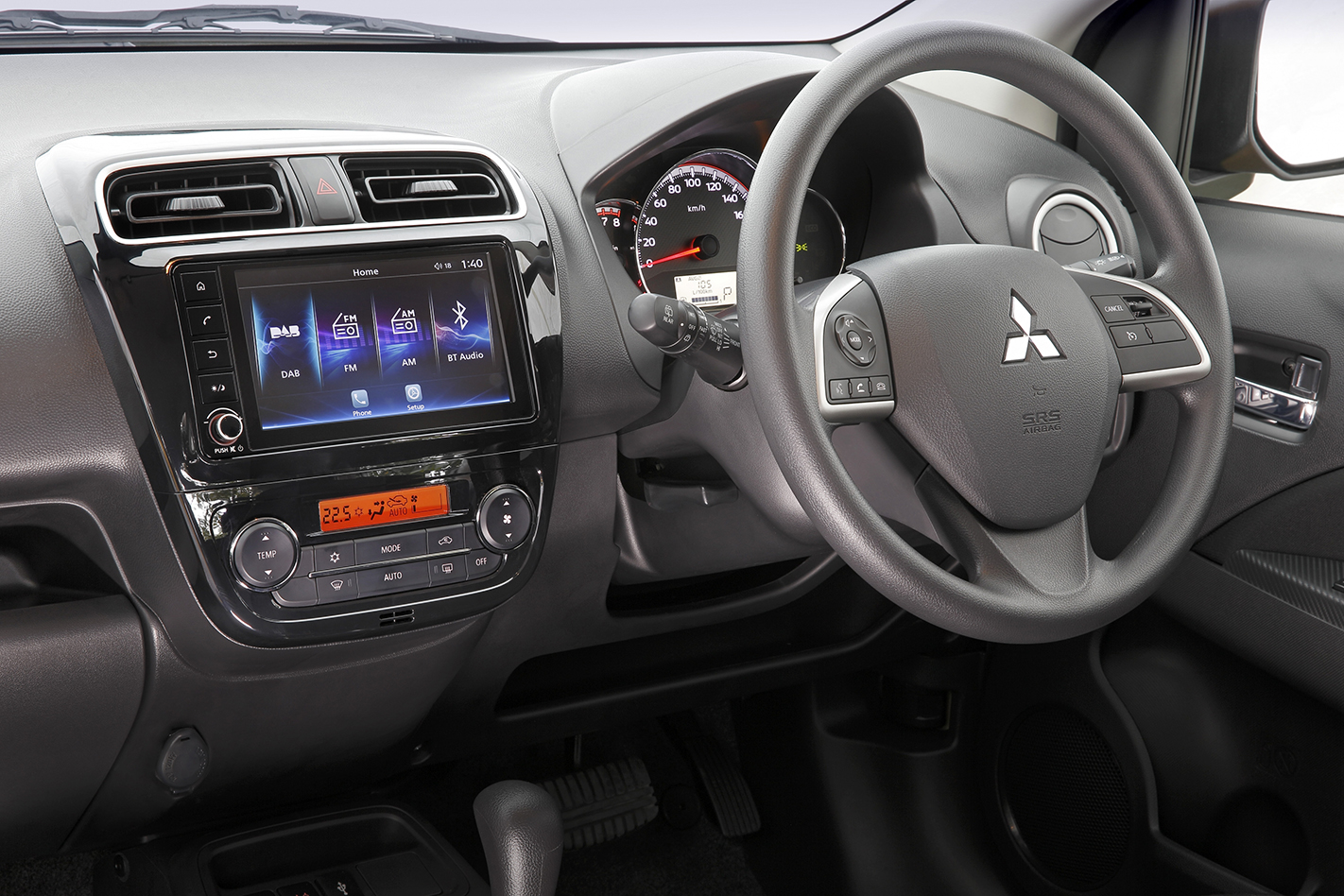
The current Mirage brings modern conveniences such as reversing camera smartphone pairing.
What about safety in a Mirage?
Every Mirage has anti-lock brakes and stability control, and six airbags. There are seatbelt reminders on the front seats only.
Two of the airbags are placed directly ahead of the front-seat occupants; two more protect front occupants from side impacts at chest level, and two curtain airbags protect occupants front and rear from side impacts at head level.
The facelifted Mirage finally added a reversing camera, and autonomous emergency braking – which uses sensors to scan the road ahead, and can apply the brakes automatically to save you from rear-ending a sharply slowing car in front. The pricier ES version also has lane departure warning, which alerts you should you stray out of your lane.
The Australasian New Car Assessment Program (ANCAP) rated the Mirage its maximum five stars for safety, in July 2014.
I like driving – will I enjoy this car?
Maybe. You will enjoy a Mirage built since about March 2016 more than those built beforehand. Mitsubishi has done some work on the steering, ride and CVT auto, and it shows.The auto is an excellent match for the engine in suburban driving. Steering feels smooth and quite accurate, and there is enough weight now to bring a sense of how well your front tyres are gripping the road.The body leans less in turns, also, while still riding quite comfortably. The Mirage is not a sports car but it responds precisely enough to the controls to be fun.You might hate the gravelly sound the engine makes when you ask it to work but you might also find it endearing. Yes it’s too loud. At times it sounds almost as though you have harnessed a powerful motorbike. Whether that’s tiresome or titillating will depend on your outlook – and possibly, on your mood.With either transmission, you will have no trouble keeping up with traffic. And the Mirage holds its own on the freeway, too.It will cope with an extended trip, but overtaking on country roads requires a fair bit of forward planning.
How is life in the rear seats?
Like most micro cars these days, the Mirage supplies back-seat passengers with their own doors – which makes getting in and out much easier than it would be in a three-door vehicle.Once you’re in, though, you’ll find you don’t have much leg room.(The discontinued sedan was longer, and gave rear passengers more space.)
How is it for carrying stuff?
The rear seat folds 60:40, but even so the stubby tail of the hatch doesn’t allow for big loads. Nevertheless the boot space – Mitsubishi quotes 235 litres with the rear seatbacks upright – is only a little less than you would find in micro-alternatives or even in the externally bigger Mazda2 (250 litres).
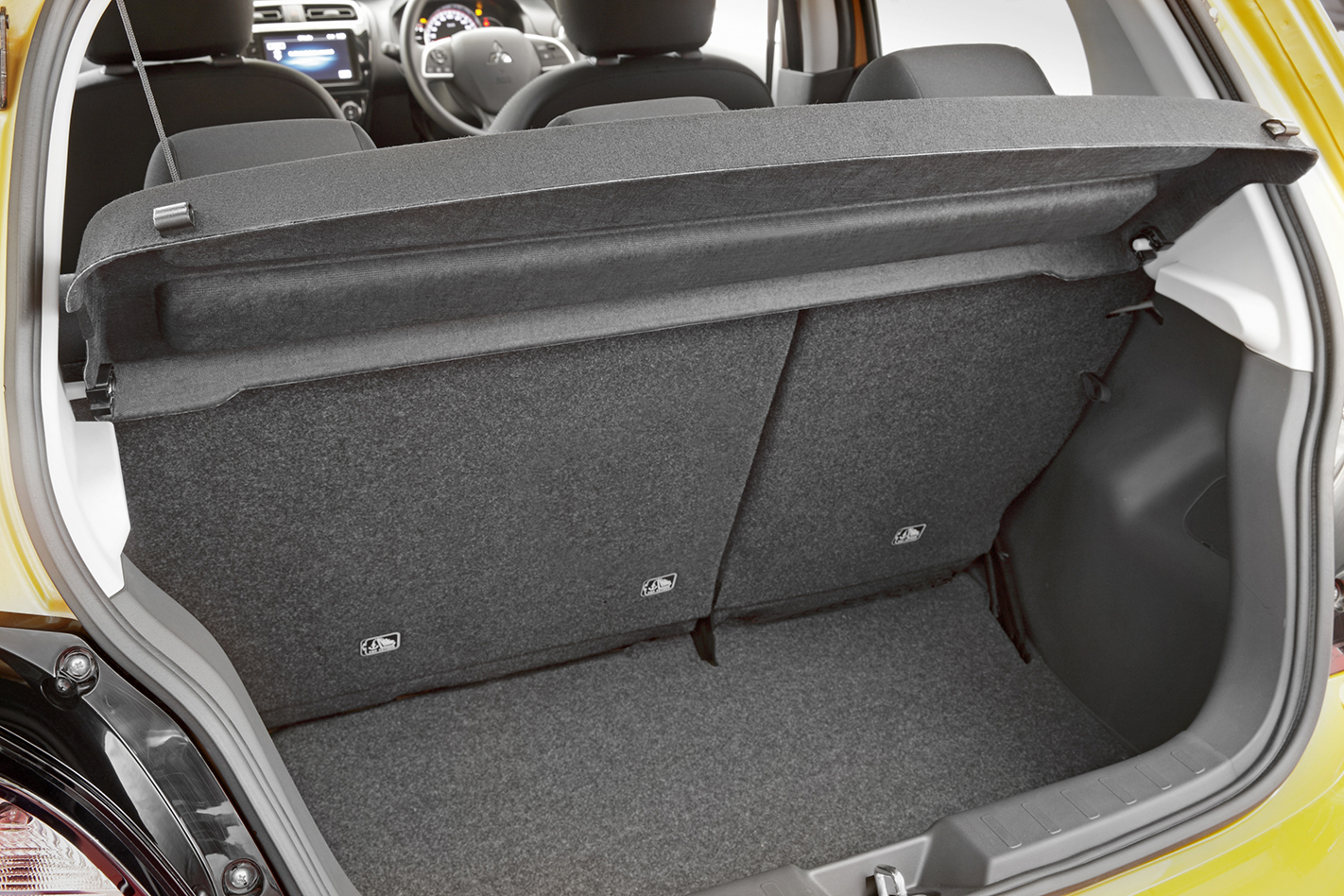
Where does Mitsubishi make the Mirage?
The Mirage hatchback and sedan are built in Mitsubishi’s Thailand plant.
What might I miss that similar cars have?
The Mirage only as two direct micro-hatch rivals on the Australian market, the Fiat 500 and Kia Picanto. It’s fair to say both are more stylish, and they each have more sportier versions should you like this size of car but want a bit more driving pleasure.
RIVAL REVIEWS:
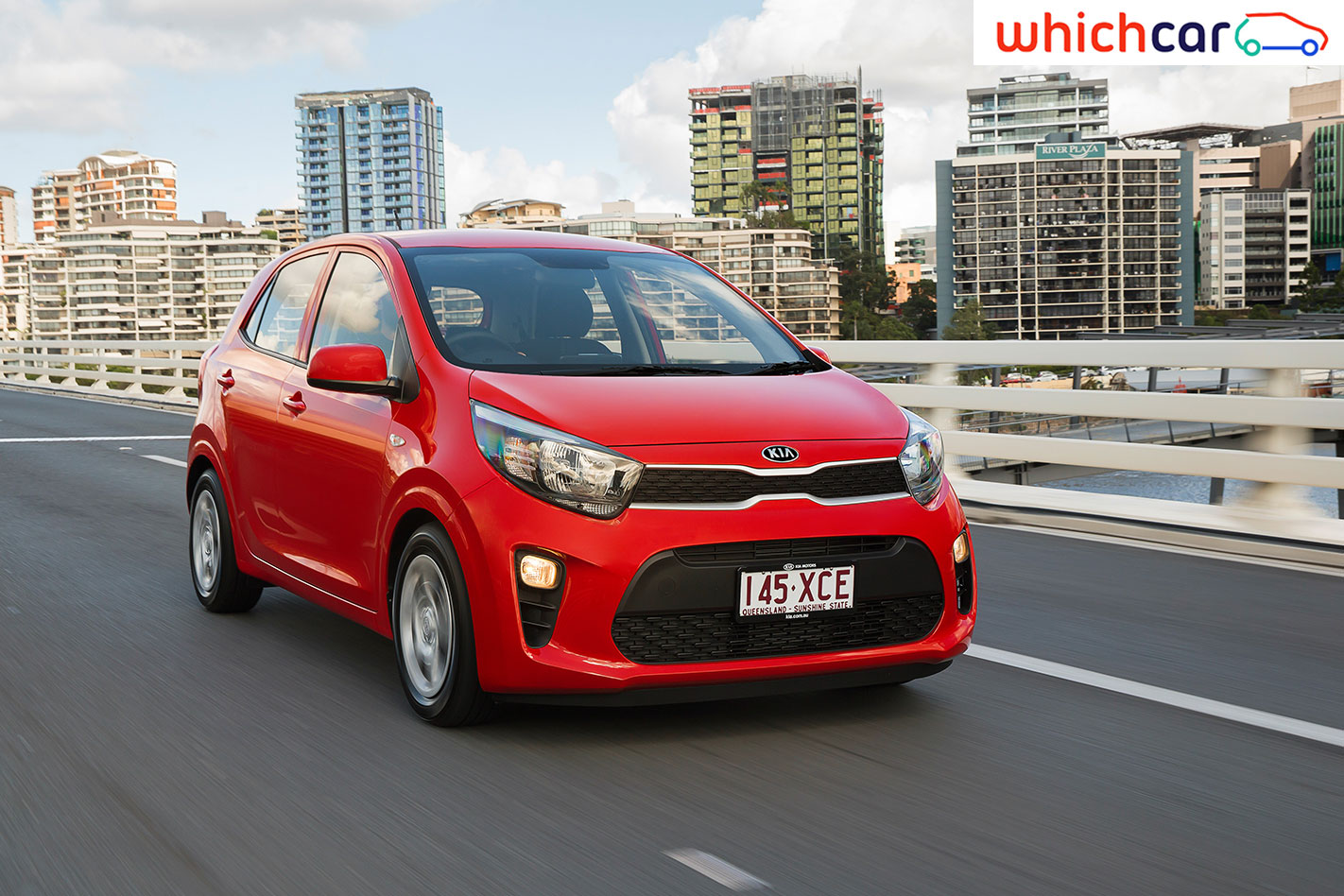
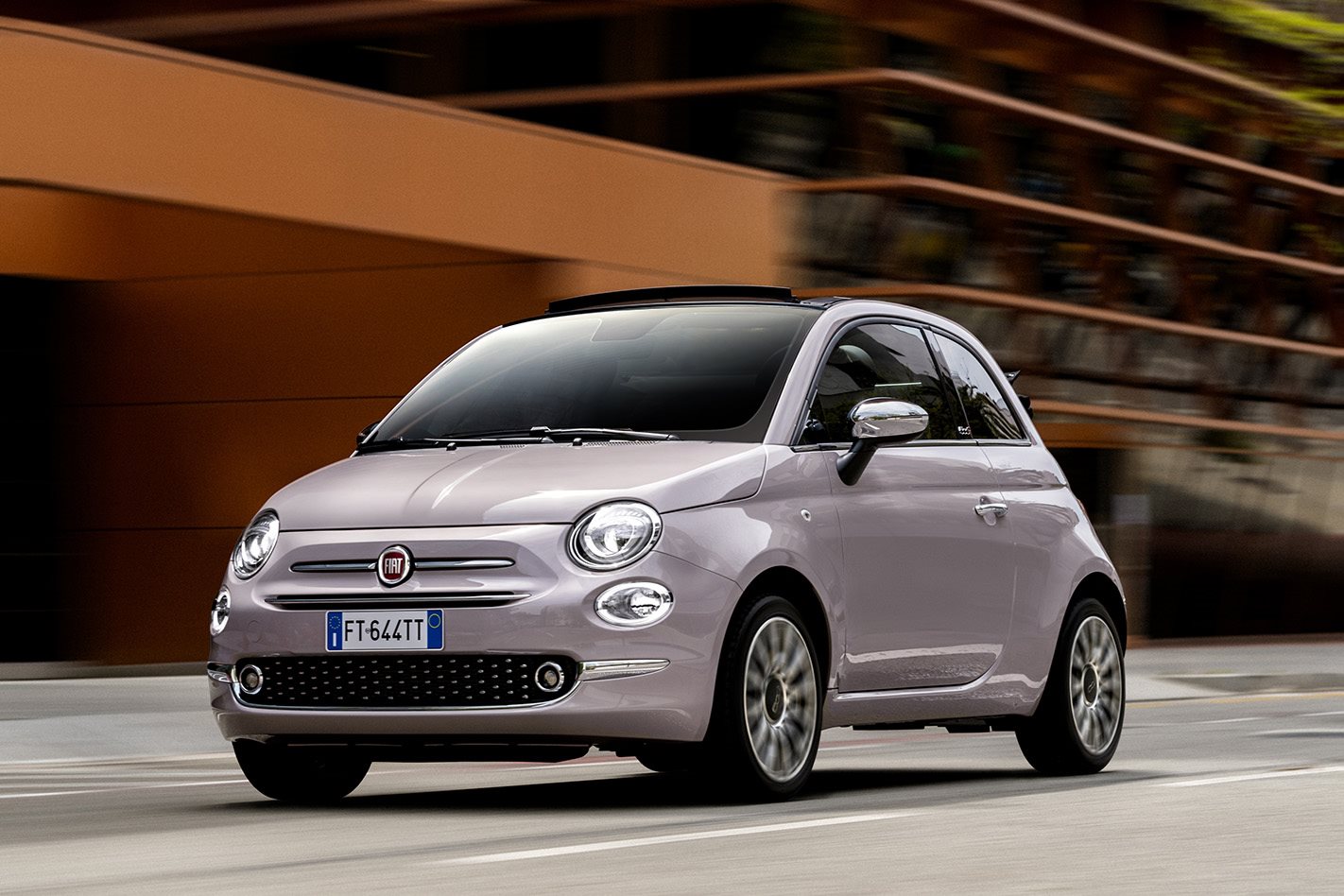
Are there plans to update the Mirage soon?
This generation of the Mirage was released in 2013, and the Sedan didn’t arrive until 2014.
Late in March 2016, both body styles received a styling facelift and minor update. The update brought revised interior trim and seating, tweaks to the CVT auto transmission, better steering, and retuned suspension that improved the ride. Auto-on headlamps and auto windscreen wipers were dropped from the top-spec LS sedan, but unlike its hatch counterpart, it offered smart-key entry.
About the end of 2016 Mitsubishi ceased selling the sedans, while the Mirage hatches continued unchanged.
The current model arrived in April 2020 with a fresh look, enhanced interior, and 7.0-inch infotainment screen with Android Auto/Apple CarPlay and reversing camera.
I like this car, but I can’t choose which version. Can you help?
If you are looking for an easy to drive and park city-car, you will enjoy the Mirage a lot more if you get the CVT auto. That makes the Mirage LS Hatch, with auto as standard, climate-control, cruise control and alloy wheels, look like the best value in a Mirage. However, what you would spend for it – at Mitsubishi’s recommended price – brings you close to attractive alternatives.
Score breakdown
Things we like
- Budget price, easy to park
Not so much
- Engine noise
- Tyre roar



